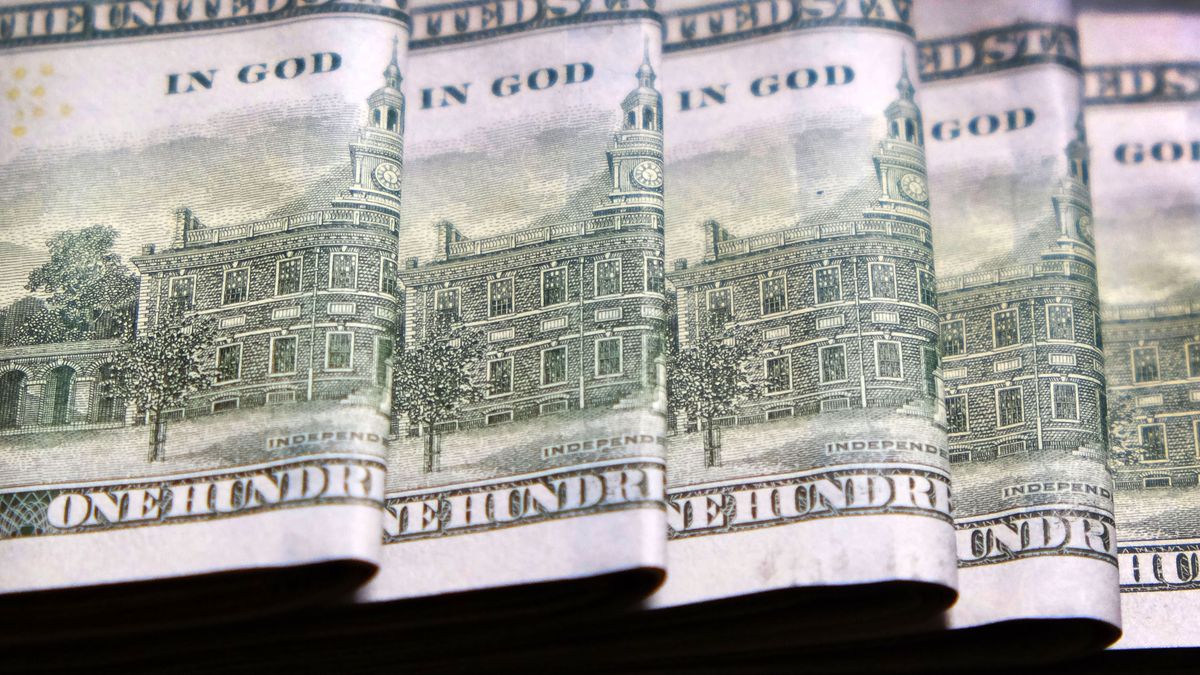There is just over a month left for the presidential elections, which will be on October 22, and the market is beginning to outline forecasts for these next 30 pre-election days and identifies what will be the key variables for the blue dollar and the other parallel exchange rates (the MEP and the CCL) in this context.
This Wednesday, the Dolar blue fell $5 and closed at $735 after three consecutive days on the rise in which it had risen $18 in total. And the gap with the official exchange rate was 110%. While, The “Cash with Settlement” dollar (CCL) is the most expensive exchange rate on the market, with a quote of $742.94 and the MEP quotes $679.95with a fairly calm dynamic due to the daily interventions carried out by the Central Bank (BCRA) via bond purchases in that market.
Thus, Equilibra economist Lorenzo Sigaut Gravina points out that it is possible that a dynamic similar to that of August will occur in the blue dollar and financial markets in October. Remind us that the blue marked a rise of 33.6% last month and it was the month in which the CCL rose the most since August 2019, since this year it rose 41% (against 42% 4 years ago). So that month, prior to the elections, there was “strong pre-election pressure on alternative exchange rates,” he describes. And he points out that this pressure will surely be accentuated, because the official exchange rate will be far behind inflation.
Exchange delay: the underlying data
And it is that, After the 22% devaluation, the wholesale dollar has been sitting still at $350 for more than a month and, as inflation advances, there is an accumulated delay in the price of the dollar, which could impact upward pressure on the blue and financial markets.
However, Bisang does not expect a strongly bullish dynamic to occur, but instead anticipates a moderate rise. His foresight responds, in part, to the fact that, Lately, hedging in CER instruments (tied to inflation) has increased a lot, more than in instruments tied to the dollar (such as dual or dollar-linked bonds). “In that sense, it could be said that the acceleration of inflation took pressure off the dollar,” he explains. And he believes that this dynamic would counteract a possible rise in parallel exchange rates.
Uncertainty variable, another key for the blue dollar
But the uncertainty variable is a key element moving forward. “We do not know if the delay in the official dollar, which for the October elections will be similar to what was registered prior to the PASO, will be corrected immediately after the elections. And there is also the unknown of the electoral result, which is decisive in knowing what will happen next. Therefore, in what remains until the elections, we are going to have all the uncertainty prior to the elections,” predicts Sigaut Gracina.
And that puts a lot of pressure on the parallel dollar markets, especially on the blue market, which is managed a lot by context, responds to political and economic dynamics very quickly, because it is informal and small. Therefore, he points out that “It is very important to know what the new president-elect will do”.
Dollar and greater liquidity: explosive combo
Camilo Tiscronia, economist and director of CyT Economic Advisors, also hopes for blue, MEP and CCL dollars, going forward, the outlook is upward and mentions the fact that the fiscal announcements of recent days will also do their part to put pressure in that direction. And, on the one hand, they imply more issuance and more pesos in the pockets that can go towards the dollar, and, on the other, more consumption, which generates inflationary expectations.
Rate policy: a barrier for the dollar
Another central element that will define what happens with the dollar will be the rate policy implemented by the BCRA. After knowing the data on the August consumer price index (CPI), it was decided to leave the fixed-term yield unchanged at 118% nominal annual, which is equivalent to 9.7% monthly and 204% effective annually. The decision was based on the fact that, given that inflation was expected to be high due to the devaluation implemented, it is considered to be a temporary peak and will tend to decrease in September and October. That will be decisive in defining the BCRA’s rate policy.
“To know what is going to happen to the dollar, you have to follow what is happening with inflation and rates. The elections are very close and this will be felt in a dollarization trend, which will put pressure on financial and blue dollars. That is why it is key to strengthen the attractiveness of instruments in pesos to take pressure off the blue dollar market and financial markets,” explains economist Jorge Neyro in this regard.
BCRA firepower: the necessary containment
However, the greater firepower that the BCRA is managing to generate as a result of the implementation of the soybean dollar 4, which is allowing it to accumulate the most extensive purchasing series in the exchange market of the year (it already has 27 positive rounds) and thanks to which in September it accumulates, to date, pockets of US$13 million, is data that can help ease the exchange rate front if necessary. In fact, it is thanks to that that it has been systematically intervening in the MEP market and, thus, in some way arbitrates the blue and the CCL.
All in all, as economist Tomás Tenconi points out, “everything would indicate that, going forward, the MEP dollar will continue to be heavily intervened to calm devaluation expectations, although it is to be expected that there will be more demand as the elections approach.” in all parallel squares, a logical response from savers and investors to electoral uncertainty.
Source: Ambito
I am a 24-year-old writer and journalist who has been working in the news industry for the past two years. I write primarily about market news, so if you’re looking for insights into what’s going on in the stock market or economic indicators, you’ve come to the right place. I also dabble in writing articles on lifestyle trends and pop culture news.




